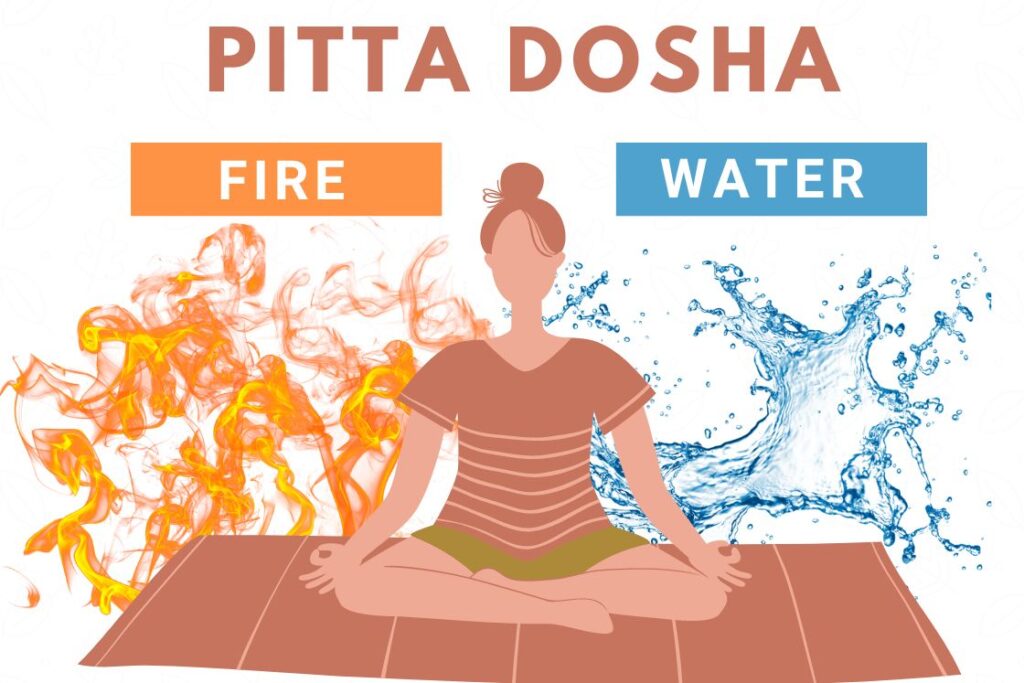
Understanding Pitta Dosha in Ayurveda: The Fire Element
Ayurveda, the traditional medicine practice of India, placed emphasis on the balancing of the three fundamental energies within the body, the Vata, Pitta, and Kapha doshas. Each dosha represents a special blend of elements in the form of energy and has its own significance in our general well-being. In this article, we’ll study the Pitta dosha which often is called the fire element.
The pitta dosha is a combination of the fire and water elements. It controls the metabolic and transformation processes in the body such as eating, digestion, and incorporation of nutrients in the body. Pitta is marked by heat, sharpness, fat, lightness, and spreading.
Pitta dosha people normally have medium build that is slim but strong, sharp intellect, quick and intense digestion. They are usually energized, enthusiastic and possess leadership characteristics. In this case, when Pitta becomes imbalanced, it is accompanied by a range of health problems.
Pitta, like one of its main functions, is to regulate digestion. When balanced, it ensures the proper digestion and metabolism of food leading to a healthy body state without obesity. Yet Pitta taken in excess may lead to hyperacidity, as well as inflammation and digestive issues such as acid reflux and ulcers. Cooling is the remedial measure for Pitta dosha. It is advisable to consume cucumber, mint and coconut.
Apart from the liver, pitta also rules the skin, and when it is not in balance, it can show up as skin problems, such as rashes, acne, or inflammation. In order to keep their skin healthy, individuals with a dominant Pitta dosha need to avoid overexposing themselves to the sunlight and rather do their skincare routines gently.
In terms of emotions, pitta may include attributes such as intensity and passion. # It fosters confidence and tenacity when well aligned. On the other side, too much Pitta can cause strong rage, bad temper, and ill-temperedness. Try meditation and deep breathing as methods of relaxing which will take care of the Pitta emotional component.
Ayurveda recommends that Pitta dosha is balanced through lifestyle and dietary modifications. Sufficient sleep, consumption of spicy and oily foods, and keeping hydrated are of importance. Pitta balancing diet consists of sweet, bitter, and astringent tastes, and this is where grains, vegetables, and dairy come in.
Herbs like aloe vera, coriander, and fennel have been recommended as the pacifying agent for Pitta.Furthermore, we should incorporate a daily physical activity involving swimming or yoga to help this dosha in maintaining its balance.
In the end, Pitta dosha is the main focus of Ayurveda as it is based on its understanding and balancing.Blending suitable habits, food choices, and mindful practices, we can control Pitta; this sustains the balance and the sense of being alive in our physical, psychological, and emotional aspects.
No Carb Diets: Are They Good for Your Health?
Carbohydrates are one of the three main macronutrients, the other macronutrients being proteins and fats. They can be found in food items such as bread, pasta, rice and fruits. Low-carb diets, or ketogenic diets, significantly restrict carbohydrate intake making the body enter a state of ketosis where fat is burnt for energy instead of carbohydrates.
HEALWELLHUB
"Heal. Thrive. Unit





Leave a Reply